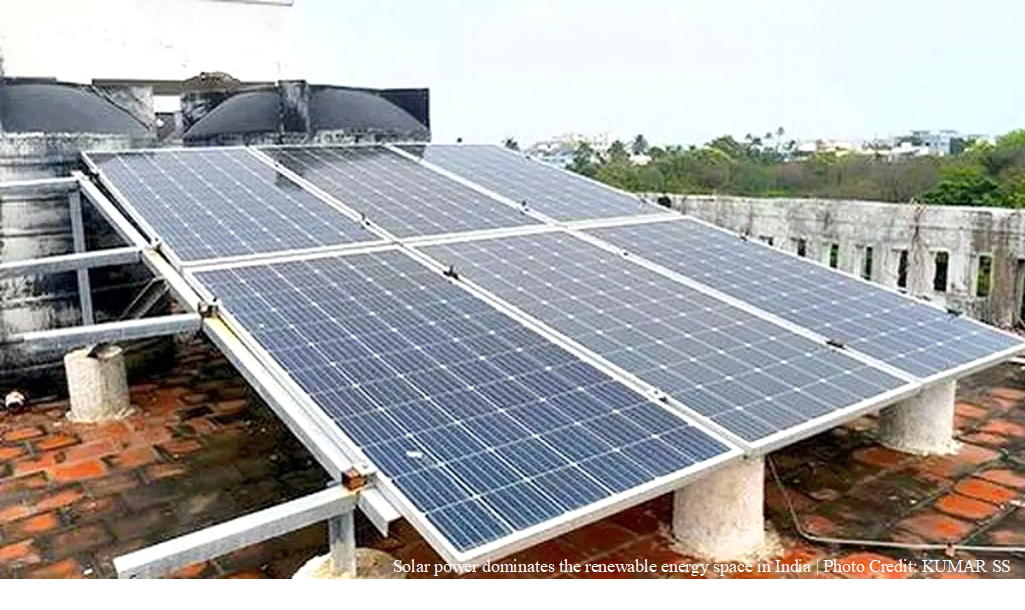Ensuring successful transition to renewable power
07 May 2024
Opinion: Sanjib Pohit.
Focus on grid balancing, optimal storage capacity and spatial distribution of power demand is needed.
The success of India’s net zero pledge by 2070 rests heavily on India’s successful energy transition in the power sector, as it is responsible for more than 50 per cent of emission.
So, India has gone all out to expand installed capacity of renewable electricity, with a bias towards solar. The report card indicates that there has been a sharp rise in the installed capacity of renewable electricity even though the energy mix of generated renewable electricity does not indicate any sharp spike. In fact, the divergence between generation and installed capacity of renewable electricity is becoming wider.
This trend needs to be reversed. A primary reason for this trend is the way our distribution companies enter into purchasing agreements with the producer of renewable electricity.
A distribution company usually does not insist on supply of power for 24 hours from the producer of renewable electricity but on purchasing their entire production even if it is limited to eight hours in a day — the general production hour of a typical solar-based power plant.
As a result, the risk of purchasing power for the rest of the time of the day lies with the distribution company, which is dependent mostly on fossil power for same. Barring the new Adani mega renewable power project, almost none of the renewable power companies has attempted to build in solar/wind hybrid/battery storage model for providing uninterrupted power for 24 hours.
If the purchasing agreement insist on buying power for 24 hours from a supplier, we would have seen more such hybrid power projects.
Grid balancing, transmission
Currently our fossil-based power projects are more or less evenly spread across India as coal/piped gas are by and large available all over India. Consequently, the transmission line of India along with substation has been developed accordingly.
On the contrary, the renewable power like solar is by and large being produced in a few States due to land constraint. The potential for wind energy is also observed to be concentrated in a few States. Thus, the existing transmission line and substations may not be able to transmit power over much longer distances.
Furthermore, unlike power from conventional sources, power from renewable sources always exhibits large variation in a day due to vagaries of nature (wind speed, sunlight, etc).
Thus, in other countries where the emphasis is on producing higher electricity from renewable sources, solar/wind capacity augmentation goes hand in hand with other sources like hydro power or particularly pumped hydroelectric energy storage (PHES) for load balancing.
PHES has emerged as one of the most important sources of hydroelectric energy storage used by electric power systems for load balancing. However, this does not seem to be in much favour in India. Only recently has India woken up to the grid balancing aspect and tenders are being floated for storage of electricity in batteries along with construction of renewable solar plant.
Integrated assessment model linked to power system model is a potential solution to further enhance energy accessibility and optimise the power generation cost by minimising the curtailment of renewable power through optimal introduction ofstorage capacity and location specific planning.
Mapping plan
Spatial mapping of available RE resources along with transmission and distribution network and mapping of demand can further help policymakers prepare an implementation plan for low carbon transition.
It plays a crucial role by ensuring energy through resource planning, optimising energy mix, infrastructure planning, policy formulation and economic analysis. In many EU countries, energy planning considers power infrastructure, network topology, and spatial distribution of power demand while planning for electricity transition.
Till now, probably all the bottom up energy models developed in the context of India do not take these into account. As a result, investment numbers generated out of these modelling exercises for energy transition may be off-target or infeasible. It is time a power system model for renewable electricity integration and energy transition analysis is developed in India.
Sanjib Pohit is Professor at NCAER. Views are personal.
Published in: The Hindu Business Line, 07 May 2024






